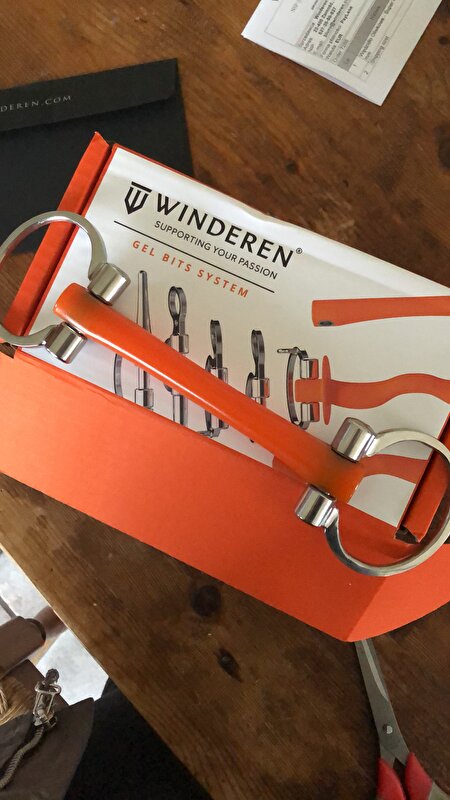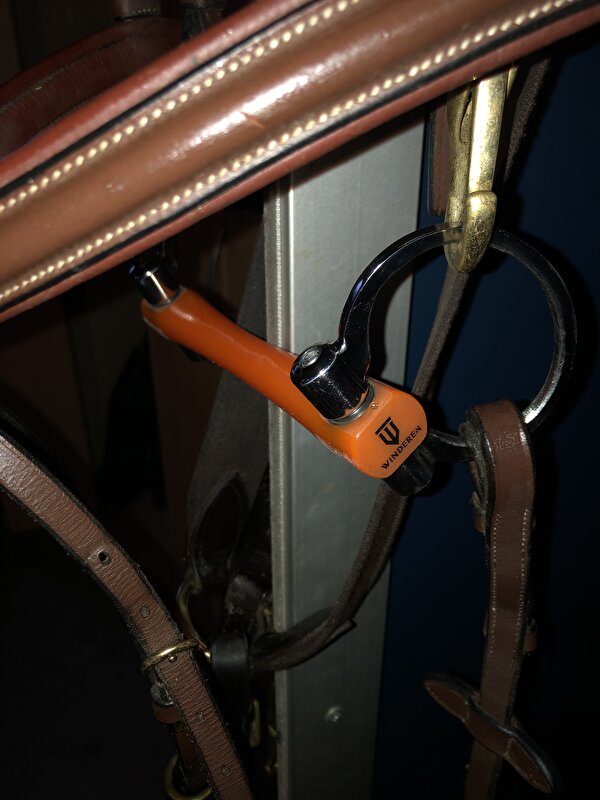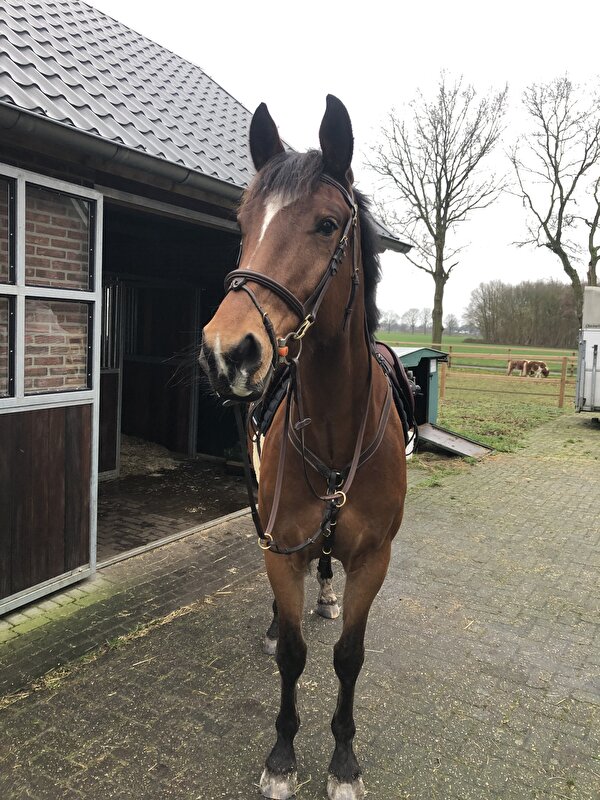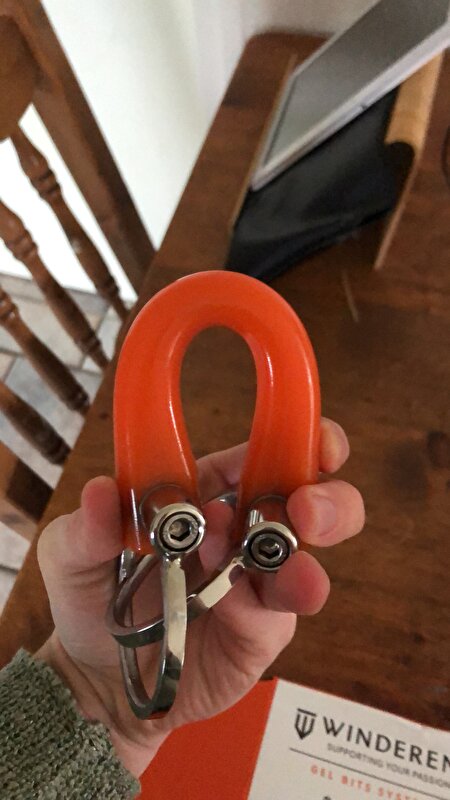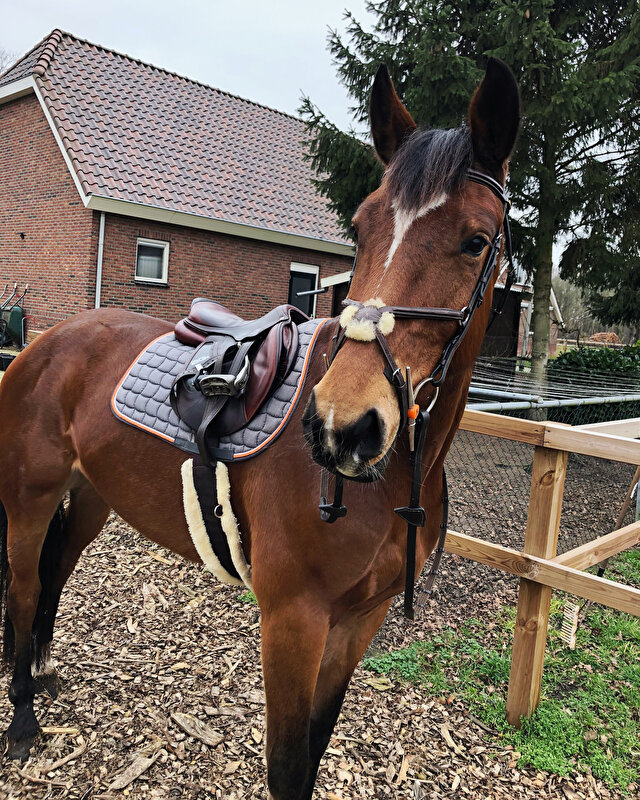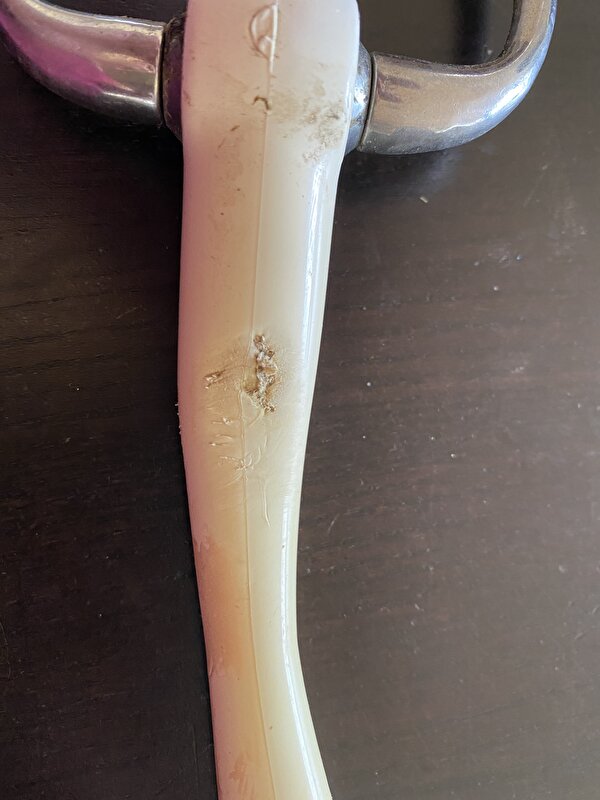It is hard for me to give you an advice without seeing your current bit and knowing you and your horse. Choosing the right bit is a very individual thing, which depends not only on horse’s preferences, but also on the rider. I will try to tell you a little about available mouthpieces and cheek pieces and I hope it will help you to make a decision

We have 4 available versions of mouthpieces (without joints), all of them are made from the same synthetic gel, which is willingly accepted by most of the horses.
Flexi and Super Flexi are soft mouthpieces, which are flexible (Flexi - medium flexibility and Super Flexi - hight flexibility). Ported Mullen Mouth and Ported Mullen Mouth with Bit guards have a steel cords inside and are rigid. They also have an anatomical shape with a space for the tongue. These mouthpieces are stronger than Flexies. Super Flexi bit can be bent almost in half (when it is not placed in horse’s mouth of course) - it has a high level of flexibility and it is the softness mouthpiece in our offer. The Flexi mouthpiece is medium flexible, you can bend it 2-3 cm up and down when using a little strength. Ported ones are rigid with a space for the tongue.
We also have a large offer of cheek pieces, which are interchangeable and can be freely combine with any of mouthpieces.
Eggbutt. In Eggbutt cheek piece the bit rings are oval and fixed to the mouthpiece, which limits the movement in the horse’s mouth, but at the same time provides more stabilization without strong fixation. The bit moves back and forth but does not rotate, which could be helpful, for example, for horses who play with the bit too much. In general, it is considered as a soft, basic bit, which doesn’t pinch the corners of the horse’s mouth. Eggbutt is also suitable for young horses, sensitive horses as well as for riders with an average hand.
D-ring. In D-ring, just as its name suggests, the bit rings have the shape of a letter “D” and are fixed to the mouthpiece. It is standing between EggButt and FullCheek - the bit lays stable and does not rotate, so it cannot be pulled through the mouth, which helps with turning. It is suggested for young, inexperienced horses and also for school horses.
Baucher. It is a cheek piece with a shape of letter “b” with an eye for the bridle cheek piece at the top and with a round ring for the rein. It is quite similar to the upper part of Pelham - it is fixed in the mouth and creates slight poll pressure because of leverage. Well suited for sensitive horses.
Full-cheek. In Full-cheek, bit rings are extended with arms, which provide a stable position of the bit and prevent it from being pulled through the horse’s mouth. Full-cheek exerts lateral pressure and helps to make turns easier. Used in combination with keepers, it also gains extra stability and a slight leverage action. Full-cheek is sharper than Eggbutt or
D-ring. Especially recommended for young or strong horses.
Gags. In the gag, the bit rings have small holes in the top and the bottom for the over-cheek rein, which passes from a headstall downward through holes and onward to the rider’s hand. The gag is usually used with two reins (normal rein plus over-cheek rein), which creates a leverage effect and provides better control. Recommended for strong-mouthed horses, who put a lot of weight in rider’s hands, and also for the horses that have problems with bringing and keeping the head up.
The Eggbutt gag combines the leverage action of the over-cheek rein with the stabilization effect of the eggbutt cheek piece.
The Full-cheek gag combines the leverage action of the over-cheek rein with the lateral pressure of full-cheek cheek pieces, maintaining its ability to help with turning.
The Curb gag has an extra ring on the top of the bit ring, and the over-cheek ropes go from a headstall through holes for the over-cheek rein and then connect underneath the chin instead of leading to the rider’s hand. It has a different effect than other gags, because of creating more pressure on the lower jaw and chin. Good for strong horses that rush into fences, but not suitable for inexperienced riders and horses.
Kimblewick/Kimblewick RNF. Kimblewick/Kimblewick RNF belong to the category of Pelhams, but are softer and are used with only one rein. Allow the possibility to attach the rein in different ways to regulate the sharpness of the bit. Usually used together with a curb chain. Good for strong-mouthed, but sensitive horses.
Pelham. Combines features of both snaffle and curb bits. Available in 3 versions: with short (Baby Pelham), medium or long shanks - the longer the sides, the sharper it is. Pelham has two rings - the bit ring plus the ring at the bottom of the sides and can be used with one or two reins in different variations as well as with or without pelham strap and curb chain. Ensure an extra leverage effect on the horse’s occiput and, together with the curb chain, exert pressure on the lower jaw. Usually used for strong horses or in situations that require better control (e.g. showjumping, eventing), helps to make horse rounder in its neck. Not suitable for inexperienced riders or horses.
Swales Pelham. It’s the modification of a pelham, but with bridle cheeks attached to the inner rings, which causes the lifting effect by exerting pressure on the jaw and reducing pressure on the occiput. It has stronger curb action and can be used with one or two reins together with curb chain as well as with pelham straps. Developed especially for strong experienced horses that have tendencies to lean down or becoming “too hot” or “over-enthusiastic”. Not suitable for inexperienced riders and horses. Available in three variations - with a short, medium or large shanks.
Curb. It is usually used together with curb chain and snaffle in a double bridle with 2 reins, mainly in dressage in higher classes. It helps to achieve maximum flexion while maintaining light contact. Has a leverage action with pressure on a poll and jaw. It is a very sharp combination, which can be used only by experienced riders and well-trained horses.
Each cheek piece and mouthpiece can be freely combined with each other. I hope this information will help you to create the perfect bit for your horse

If you have any other questions - feel free to contact me again at any time!


